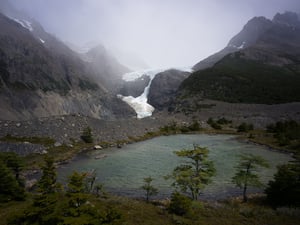The other day, I tried to list everything that contributes to a good photo. What are the crucial ingredients? High on the list were two things: thinking actively about composition in the field, and deliberate and careful post-processing. But what sustains the activity of going and taking those photos in...
Landscape Photography Tag Archive
Photographing Ice and Ever-Changing Horizons in Svalbard
Svalbard, a Norwegian archipelago where nature reigns supreme, provides a unique and challenging photographic experience. While many trips to this region focus on wildlife, and I’ve traveled there for that purpose, too, the Arctic landscape is an incredibly captivating subject. I’ll explore it in this article.
Finding a Photographic Style in Nature Photography
In nature photography – where the image is unlikely to be prepared, posed, or lit by the photographer – one’s unique personal style may be less apparent than, say, in a studio portrait. A photographer cannot claim full responsibility for results that heavily depend on natural conditions, right? Well, I disagree.
The Subtle Art of Blocking in Landscape Photography
A fundamental idea in composition is that you should exclude anything from your photo that doesn’t add to your message. An errant branch, footprints on the ground, whatever harms your story – leave them out of the composition, and you’ll get a stronger photo. But… what if you can’t exclude them completely?
Photographing Atmosphere in a Snowy Landscape
In landscape photography, we often look for spectacular and majestic subjects. Imposing mountains, breathtaking waterfalls, or lush forests are powerful and visually appealing. Even more so when shot under dramatic light. However, if you wish to obtain significant images, looking for atmospheres that resonate with our state of mind is...
Tips for Multi-Day Backpacking as a Landscape Photographer
I just returned from one of the longest hikes I've ever done, the famous O Circuit in Chile's Torres del Paine National Park! This eight-day hike goes around the Paine massif itself, circumnavigating these magnificent peaks and showcasing them from every angle. For landscape photography, it's hard to think of...
The Art of Discovering the Unexpected
In photography, having a vision and a concrete plan is always helpful. But getting too attached to your initial ideas can prevent you from seeing good subjects in front of you, especially when they are entirely different from what you had in mind. Of course, having a plan when you...
Why You Should Experiment with Different Genres of Photography
Many of us have a “go-to” thing to photograph. Often, this subject or style is the reason we got into photography in the first place. For me, it is portraiture. I love the dynamic feeling of capturing a moment in time of a person’s life—whether it’s at a key event...
Landscape Photography on a Cloudless Day
Photographers may be some of the only people with a negative opinion of blue skies! But who can blame us? Harsh sunlight doesn’t complement a lot of subjects very well – if anything, just the opposite – and an empty, blue expanse usually doesn’t add much interest to the top of a landscape photo.
Searching for Fractal Beauty in Landscape Photography
There are two impossible questions I like to ask myself as landscape photographer. Although they’ll never have perfect answers, the closer I try to get, the more I see my photos improve. They are: “What makes a good landscape?” and “What makes a good landscape photo?”









